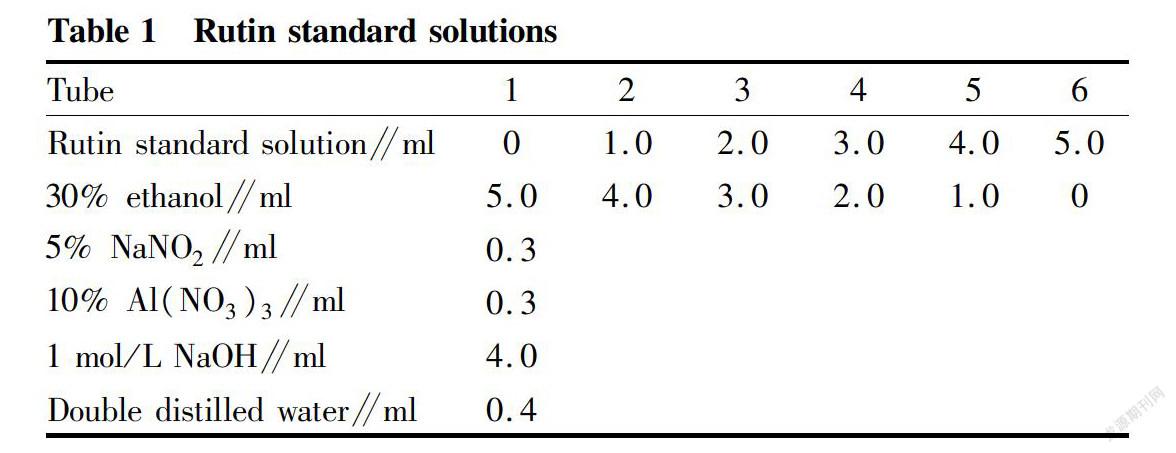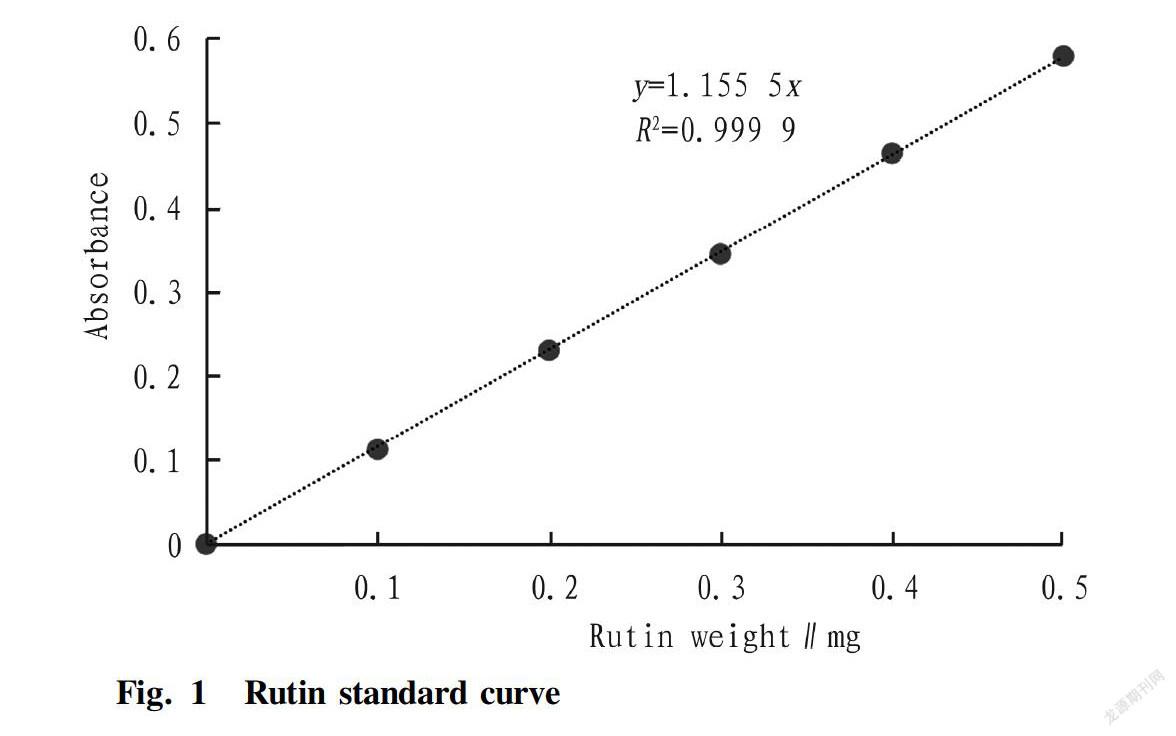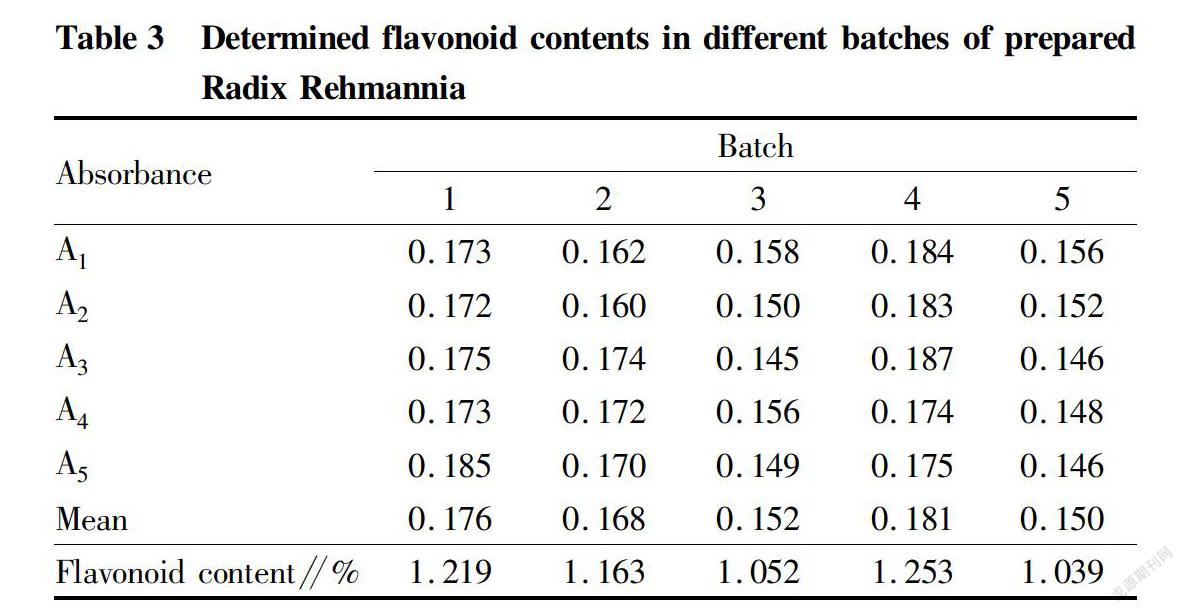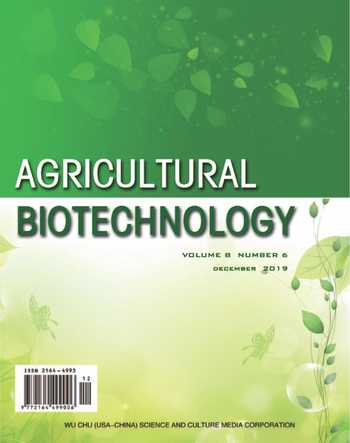Determination and Analysis of Flavonoid Contents in Different Batches of Dried Radix Rehmannia and Prepared Radix Rehmanniae




Abstract [Objectives] This study was conducted to understand Radix Rehmannia quality and provide reference for selection in application.
[Methods] The contents of flavonoids in five batches of commercially available samples were determined by ultraviolet spectrophotometry, and the precision and reproducibility of the determination method were analyzed.
[Results] The contents of flavonoids in different batches of Radix Rehmannia samples were not completely the same, but the differences were not large overall. The experiment results have good reliability. As a medicinal plant, the climate and soil conditions of the producing areas would have an impact on the quality of Radix Rehmannia.
[Conclusions] The contents of flavonoids determined in Radix Rehmannia were relatively stable, the quality was basically the same, and the overall quality was good.
Key words Radix Rehmannia; Flavonoids; UV spectrophotometry; Determination
Received: August 16, 2019Accepted: November 7, 2019
Fengyan SONG (1969-), female, P. R. China, associate professor, devoted to research about the composition analysis of traditional Chinese medicine.
*Corresponding author. Email: fysongjj@126.com.
Radix Rehmanniae refers to the roots of Rehmannia plants, and the best Radix Rehmanniae is produced in Huaiqing, Henan. Radix Rehmanniae is divided into three types: dried Radix Rehmanniae, preparead Radix Rehmanniae and fresh Radix Rehmanniae. Dried Radix Rehmanniae is commonly known as "Shengdi". It has soft texture, strong viscosity and light odor and taste sweet. It is cool in nature and has the effects of removing heat to cool blood and promoting the secretion of saliva or body fluid. Prepared Radix Rehmannia is produced by processing dried Radix Rehmanniae, and has the effects of nourishing blood and nourishing yin. Radix Rehmannia is rich in flavonoids, sterols, rehmannin, amino acids, polysaccharides, vitamin A and other ingredients. It has strong antioxidation and immune regulation functions, and also has certain regulatory functions for endocrine, cardiovascular and hematopoietic systems[1-6].
Flavonoidcompounds, also known as bioflavonoids or vitamin P, are colorforming compounds with a tricyclic phenyl benzopyran structure, including biologically active components such as anthocyanidins, flavonoids, isoflavones, and flavonols. In this study, the contents of flavonoids in commercially available Radix Rehmannia samples were determined, aiming to understand the quality of Radix Rehmannia and provide reference for selection in application.
Materials and Methods
Instruments
WFJ7200 ultraviolet spectrophotometer; FA2204B electronic balance; electrothermostatic blast oven; HWS24 electric thermostatic water bath; 600A pulverizer.
Reagents
Dried Radix Rehmanniae and Prepared Radix Rehmannia (purchased from Guangdong Huikangyuan Pharmaceutical Co., Ltd.); Rutin reference substance, anhydrous ethanol, sodium hydroxide, sodium nitrite and aluminum nitrate, all of which are of analytically pure.
Methods
Drawing of standard curve
A certain amount of rutin reference substance (5.0 mg) was dissolved in 60% ethanol and diluted to a constant volume of 50 ml, obtaining a standard solution having a concentration of 0.1 mg/ml. A series of standard solutions were prepared according to Table 1.
The addition of each of NaNO2, Al(NO3)3 and NaOH was followed by shaking and standing for 6 min. The solutions were diluted to constant volume, shaken and stood for 10-15 min. The obtained solutions were determined at 510 nm. Each concentration group was prepared in three replicates, each of which was measured for 3 times, and the average value was taken. With the rutin mass as the abscissa and the absorbance as the ordinate, a standard curve was drawn[7-9].
Preparation and determination of sample solution
The Radix Rehmannia samples were dried to a constant weight at 90 ℃, and pulverized through a 40 mesh sieve for use. Five parts (1.000 g each) were accurately weighed from each sample, and placed in a 50 ml conical flask, respectively. Into each conical flask, 20 ml of 70% ethanol was added, and the mixture was extracted for 6 h in a water bath at 60 ℃, and then filtered, giving a sample solution.
From each sample solution, 2.5 ml was pipetted and diluted to 50 ml with 60% ethanol, and 5 ml of the diluted solution was taken for measurement according to the method under "Drawing of standard curve". The content of flavonoids in each sample was calculated according to the standard curve equation.
Results and Analysis
Rutin standard curve
The standard curve is shown in Fig. 1. It was drawn with the absorbance value (A) as the ordinate and the rutin weight (mg) as the abscissa, and the regression equation was y=1.155 5x, R2=0.999 9.
Determination of flavonoid contents in different batches of dried Radix Rehmannia
The results are shown in Table 2. From the data in the table, the content of flavonoids in the fourth batch of Radix Rehmannia samples was the highest (1.426%), and the content of the third batch was the lowest (1.156%). The contents of other three batches were relatively close.
Determination of flavonoid contents in different batches of prepared Radix Rehmannia
The measurement results are shown in Table 3. From the data in the table, the contents of flavonoids in different batches of Radix Rehmannia samples were not the same. The fourth batch had the highest content (1.253%) and the third and fifth batches were relatively low.
Conclusions and Discussion
The content of flavonoids in Radix Rehmanniae was determined by UV spectrophotometry and the precision and reproducibility of the determination method were analyzed. The determination results have good reliability. As a medicinal plant, the climate and soil conditions of the producing areas would have an impact on the quality of Radix Rehmanniae. The contents of flavonoids determined in the five batches of dried and prepared Radix Rehmanniae were relatively stable, the differences were not large, and the quality of Radix Rehmannia materials was basically the same. The content of flavonoids in dried Radix Rehmanniae was more than that of prepared Radix Rehmanniae, which might be due to that certain components were lost during the processing and the content of flavonoids increased relatively.
References
[1] LI XE, YANG SL, YANG JS. Study on content of catalpol in varieties and earthnuts of Rehmannia glutinosa[J]. Chinese Pharmaceutical Journal, 2002, 37(11): 820-830. (in Chinese)
[2] WANG CY, ZHANG H, MENG L. et al. Determination of catalpol in Radix Rehmanniae and its preparation by HPLC[J]. West China Journal of Pharmaceutical Sciences, 2003,18(2): 134-135. (in Chinese)
[3] LI JP, MA H, WANG YS, et al. Comparison of contents of catapol and sugars in fresh and dried Rehmannia glutinosa[J]. Chinese Pharmaceutical Journal, 2001, 32(5): 300-302. (in Chinese)
[4] YU Z, WANG J, LI GS, et al. Experimental study on rehmaionoside A in nourishing yin and regulating immune functions[J]. Chinese Pharmaceutical Journal, 2002, 37(1): 20-22. (in Chinese)
[5] YOKOZAWA T, KIM HY, YAMABE N. Amelioration of diabetic nephropathy by dried Rehmanniac Radix (Di Huang) extract[J]. Am J Chin Med, 2004, 32(6): 829-839. (in Chinese)
[6] WEI XL, QIE XB. Effect of lowmolecularweight polysaccharide on expression of p53 gene[J]. Acta Pharmacologica Sinica, 1997, 18 (5): 471-474. (in Chinese)
[7] MENG YY, ZHU YL. Determination of total flavonoids in Chrysanthemum morifolium by spectrophotometry[J]. Strait Pharmaceutical Journal, 2009, (21)12: 99-100. (in Chinese)
[8] ZHOU GF, ZHANG H, LYU GY. Determination of total flavonoids in Sonchus oleraceus by spectroscopy[J]. Chinese Archives of Traditional Chinese Medicine, 2008, (26)1: 218-220. (in Chinese)
[9] LI WS. Extraction and determination of total flavonoids from Anemarrhena asphodeloides stems and leaves[J]. Journal of North China Coal Medical College, 2012, (14)6: 787-789. (in Chinese)
- 农业生物技术(英文版)的其它文章
- Observation on Cardiac Opening of the Inferior Vena Cava in Goat Fetuses
- Evaluation on Application and Spraying Effect of AirAssisted Sprayer in Apple Orchard with Dwarfing Rootstocks
- Problems in the Development of Traditional Chinese Medicinal Materials Planting Industry in Shiyan City and Countermeasures
- Study on Practical Mature Age of Individual Pinus thunbergii×P. densiflora
- Effects of Different Densityreducing Methods on Canopy Microenvironment, Tree Growth and Fruit Quality in Closed Apple Orchard
- Development of Whole Potato Flour Fish Noodles

